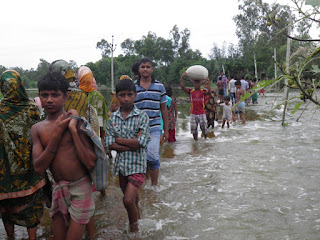Written By - Brinda Bhattacharyya
COVID 19 has proved yet again that India’s great digital march is only a double-edged sword because now, more than ever, it has become expressly evident that the digital divide is no less than any of the other inequities. While academic institutions across the country took the giant leap into switching to virtual platforms overnight and most urban and semi-urban learners followed the Pied Piper, many got left behind in the make-over. Bengal was not an exception.
The biggest bane proved to be poor connectivity, followed by the students not having the right infrastructure, like smartphones needed for the applications and tools and the platforms required by the online classes. Affordability was a critical factor, more so with many of the parents’ losing jobs, not getting salaries, or surviving on reduced incomes.
This has been compounded by the fact that with all of the learning happening at home and many of the students being first generation learners who do not have a strong educational background back home, there is not enough parental support. Earlier, for students attending state-run schools, it was the institutional learning within the school premises that was the main source of learning. However, now with students learning from home, children are now being forced to depend on their parents. For first generation learners, the impact on learning has been more severe. To add to these disruptions caused by the pandemic, West Bengal was also hit by a cyclone, 'Amphan' in 2020. Electricity and network grids crashed, jeopardizing the already fragile teaching-learning system. An article released on The Hindu shows that 40% of primary school students could not avail proper classes or study during the pandemic.
According to research conducted, a Report on Rapid Assessment of Status of Child Rights in West Bengal showed that 71 % of children were deprived of the access to digital education, 17 % had to make do with a compromise on their regular meals, and 11 % of the sick children could not avail medical treatment. Only 21.5% of the students hailing from lower classes had access to online education at the pre-primary and primary level, and merely 53.2% of students from the higher socio-economic classes had access to online education.
To add to this is the despair that many poor families can merely afford one or two gadgets, which they are forced to share with their siblings, parents etc, as a result of which they miss out on classes, if at that time any other family member needs to use the gadget.
The pandemic has had some even more distressing fallouts. The economic instability has seen the re-emergence of child-labour, as a counter-productive to all of the Government’s best efforts to provide education to all children in government institutions. The financial stress caused by COVID-19 has also seen an exodus of students registered in private schools. Many families have had to shift their students from private schools to government schools just because they could not afford quality education. Over a quarter of the students claimed that they had to shift geographical locations for various reasons, one being that online classes did not really work out for them during the 17-month long lockdown period.
Remedial measures are being taken for some of these issues. Face to face classes are limping back to life again, and one hopes that with stressed the improvements in the fields of mandatory resource allocation, functionality of the school management committees, and by making the education system more robust by bringing in trained and qualified professionals some of these damages may be remedied.






























